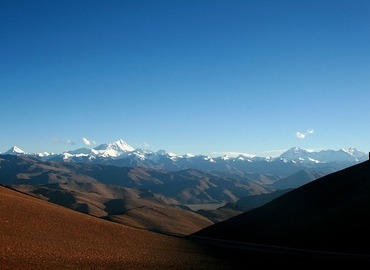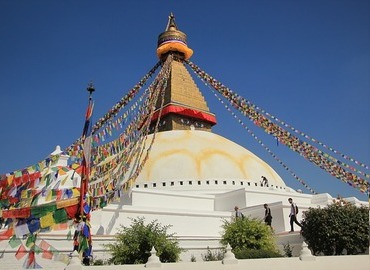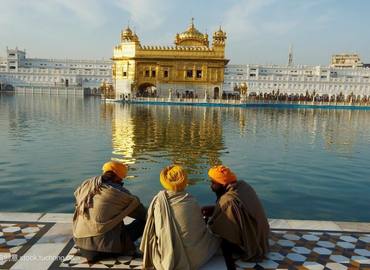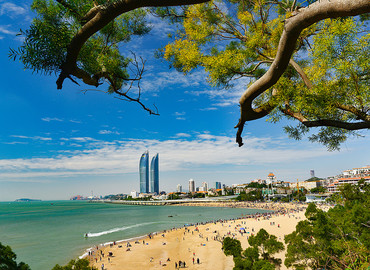Major Buddhist Holidays & Festivals of Tibetan Buddhism
- Meo
- Last Updated : 11/19/2025
As a sacred region with flourishing Buddhism, most Tibetan holidays are related to Buddhism. In Tibetan areas, there are many festivals that are closely related to Tibetan Buddhism, such as Saka Dawa, Buddha's Descent Day and Galdan Namchot. These festivals are widely spread and not only have an important influence in Tibet but also in places where there're Tibetan Buddhists. Here are some details about Tibet Buddhist holidays that may interest you.
Content Preview
Losar
Losar, whose “Lo” means year and “sar” means new, starts on the 1st day of the Tibetan Calendar and plays an important role as the Tibetan New Year. It’s the largest Tibetan holiday, which will last for 15 days at most. Losar will be celebrated by all the Tibetans. The first day of Losar is called Guru Losar, Tibetan people greet teachers and monasteries on this day. The second day is called King Losar; Tibetans pray, dance, and sing to celebrate this day. The third day is called public Losar, people celebrate this day with friends and family. Tibetans will perform special rituals, which are called Losar-related rituals on Losar. The ritual has two parts, one is performed on the eve of the New Year to close out the old year and get rid of bad aspects. After that, the other part will be performed to welcome the New Year and invite good things into their homes. Tibetan people will set up a Losar Shrine in their homes and eat guthuk and khapse with their families. This festival will fall on February 18th, 2026. >>See more about Tibetan Losar
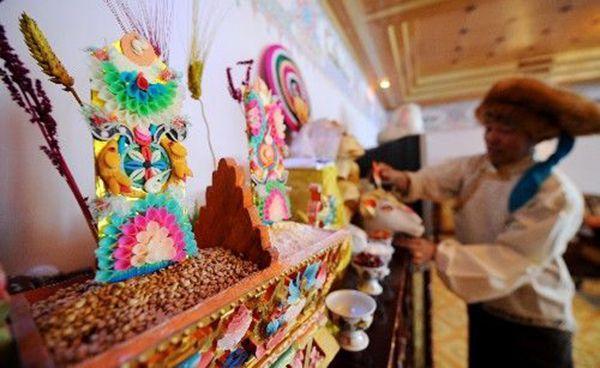
Monlam Chenmo
The Monlam is called "Malangmu" in Tibetan, which means to pray for happiness and well-being. The Monlam Chenmo falls on the 4th -11th day of the 1st month of the Tibetan calendar, and it’s one of the most important Tibetan Buddhist holidays of the Gelug Sect. This day was established in 1409 by the founder of the Gelug Sect, Tsongkhapa, to commemorate the Buddha’s enlightenment. Master Tsongkhapa held the Great Prayer Festival in Lhasa. Since then, there has been the New Year's Prayer Festival in Tibet, that is, the Monlam Prayer Festival. The main activities include examinations for the monks, monks debating, chanting scriptures, displaying huge Buddha Thangka, Dharma dance, aspiration prayers, etc. This festival will fall on February 22nd, 2026.
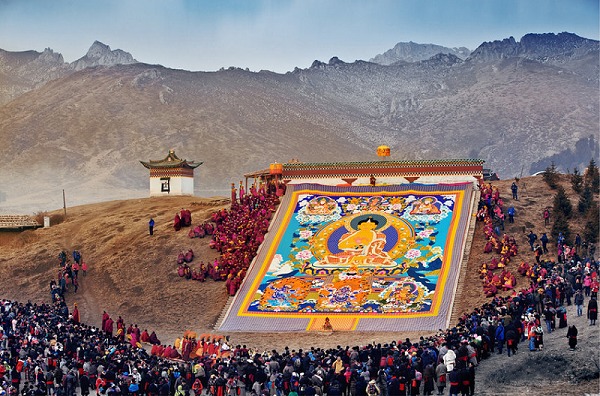
Butter Lantern Festival
The Butter Lantern Festival was created by Tsongkhapa. It falls on the 15th day of the first month of the Tibetan calendar, the last day of the Monlam Chenmo. In history, Tsongkhapa offered butter flowers and lanterns to the golden statue of Buddha Sakyamuni enshrined in Jokhang Temple to commemorate Buddha's surrender of evil spirits. Another saying is that the Butter Lantern Festival is held to celebrate the victory of the great debate between Buddha Shakyamuni and other sects. On this day, Tibetans would display colorful butter lanterns with flowers, birds, fish, insects, and human figures to celebrate. In 2026, this festival will fall on March 4th. >>See more about Butter Lantern Festival
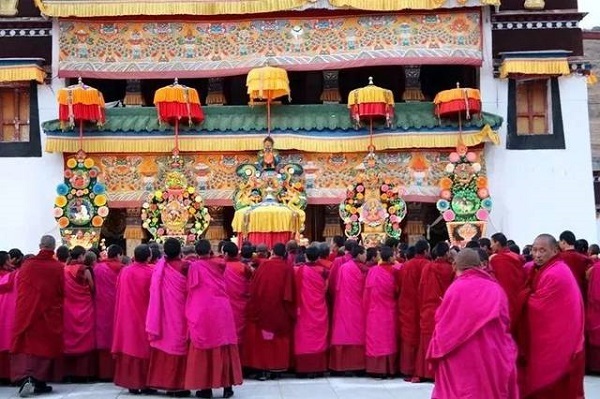
Saka Dawa
“Dawa” means “month” in Tibetan, while “Saka” is a star associated with the full moon of the 4th month of the Tibetan calendar. Saka Dawa is one of the most important festivals in Tibet. In 2026, Saka Dawa starts on May 31st and lasts one month. These days are known as the month of merits, and Tibetans usually give to beggars and refrain from eating meat during this month.
Various activities will be held this month to commemorate this. Over time, these activities have turned into large-scale kora, such as the Mt. Kailash kora. During the Saga Dawa Festival, the loop path Lingkhor, which goes a circle around the old city of Lhasa, with a total length of about 5,000 meters, is the most spectacular. On this day, Tibetan men and women dress up in costumes and pray. In addition, the Tibetans in Lhasa will gather in groups at Zongjiao Lukang Park to have a picnic and have fun with their families. >>See more about Saka Dawa
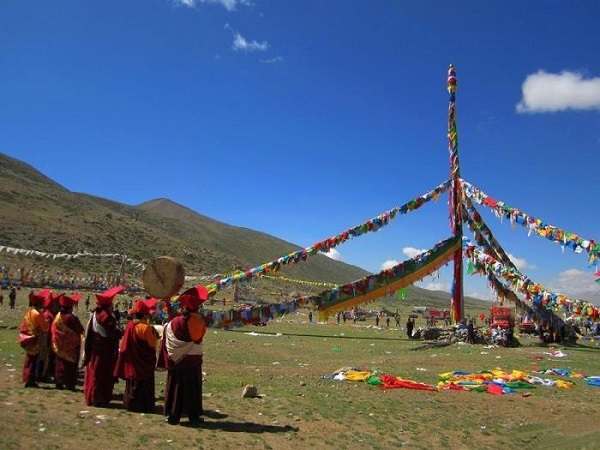
Zamling Chisang
Zamling Chisang means World Incense Day or World Happy Day. It's said to commemorate that Guru Padmasambhava once subdued all the demons in Tibet in May of the Monkey Year. At that time, Tibetans will wear festive costumes, take family members, and bring delicious food, highland barley wine, butter tea, tents, as well as various entertainment equipment and musical instruments to the quiet and forested Lingka (garden in Tibetan). They set up white tents on the lawn or under the old trees, sing and dance while eating and drinking, and enjoy nature heartily. This festival often lasts as long as one month. In 2026, the festival starts on July 1st.
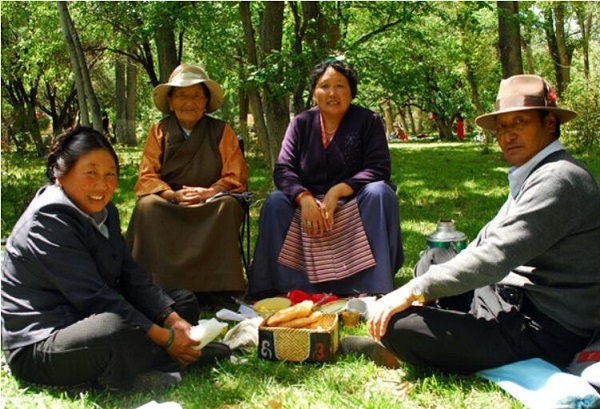
Shoton Festival
Shoton Festival, also known as the Yogurt Festival, is celebrated in the summer. Monks retreat in their monasteries for a month before this festival to avoid stepping on insects and killing them. This holiday originated from a banquet for the monks given by laypeople in the 16th century. Afterward, summer operas and theatricals were added to celebrate this festival. The operas last for whole days, filled with loud sounds of cymbals, bells, and drums. People act like villains and devils to dance in the opera, with choruses from the recitatives. Tibetan people usually watch the opera with prayer wheels rolling in their hands. There are only professional actors from Lhasa Singing and Dancing Troupe nowadays, but dancers came from all over Tibet in the old days. Family groups visit each other and have feasts together during this holiday. At night, Tibetan families will make bonfires and have fun together. In 2026, this grand festival will start on August 12th. >>See more about Shoton Festival
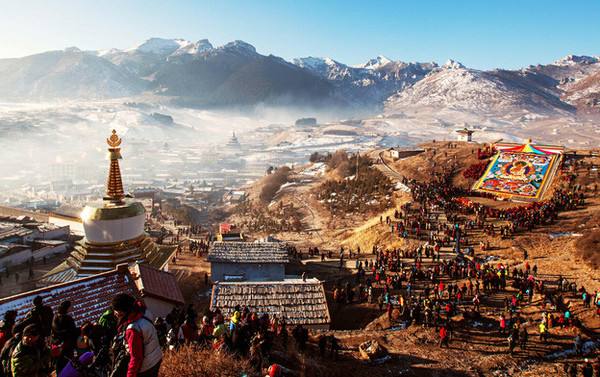
Buddha's Descent Day
Buddha's Descent Day is celebrated on September 22nd of the Tibetan calendar. It marks the return of Lord Buddha from the heaven of Trāyastriṃśa. Legend has it that Queen Māyā passed away shortly after giving birth to Gautama Buddha. When the Buddha attained enlightenment, he found his mother was not set free from Samsara, so he went to Trāyastriṃśa for three months to liberate his mother by giving teachings. It is said that the Buddha's Descent Day is the last day when Buddha stays in the heaven realm and then goes back to earth.
Tibetan Buddhism believes that the Buddha's Descent Day is one of the four great Buddhist festivals and the most auspicious one. It multiplies merits a billion times that day. Therefore, the practitioner should seize this opportunity to awaken the heart of wisdom and mercy, such as making offerings to the Three Jewels– Buddha, Dharma and Sangha and giving alms to all beings. In 2026, this festival falls on November 3rd. >> See more about Buddha's Descent Day
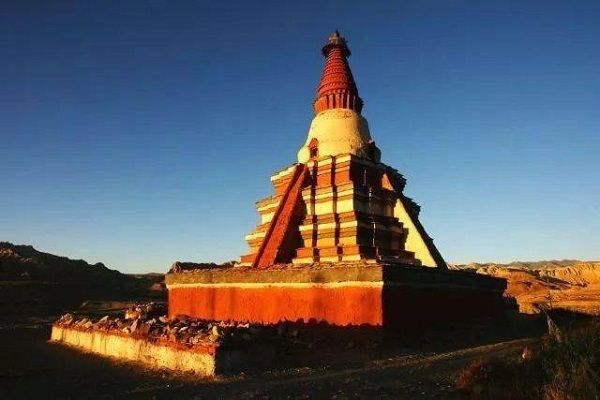
Galdan Namchot
Galdan Namchot is to commemorate the death of Master Tsongkhapa, the leader of the Yellow Sect of Tibetan Buddhism. On this day, every household must light butter lamps and keep them lit day and night. And all temples and believers belonging to the Gelug Sect will hold grand sacrificial activities such as kowtow, chanting, and lamp offering ceremonies. Gradually, this event became a traditional festival.
A few days before the festival, the followers of Tibetan Buddhism will start making butter lamps. Each lama in the temple makes more than 30 butter lamps. If you go out at night during the festival, you can see that the windowsills of every house are filled with butter lamps. If you check carefully, you will find that the number of butter lamps is odd. This is because the singular has always been auspicious in the concept of Tibetans. In 2025, this festival falls on Dec 14th. In 2026, this festival falls on Dec 3rd. >>See more about Galdan Namchot
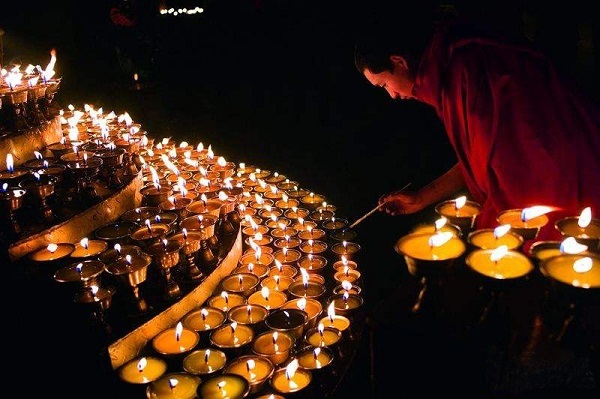
Final Thoughts
In addition to the above-mentioned holidays, the eighth, fifteenth and thirtieth days of every month in Tibetan Buddhism are also auspicious days. The tenth and twenty-fifth of each month are the days that practitioners should accumulate blessings and purify karma. The twenty-ninth day of the month is usually a special day related to Dharma protectors, Tara, and the goddess.
And, there are some auspicious days just for some sects of Tibetan Buddhism and partial Tibetan areas, as well as other festivals such as Obon Festival on July 15th, the "three birthdays" of Guanyin Bodhisattva when he was born, became a monk and achieved enlightenment, the birthday of Manjushri Bodhisattva, etc.
Email response within 0.5~24 hours.


